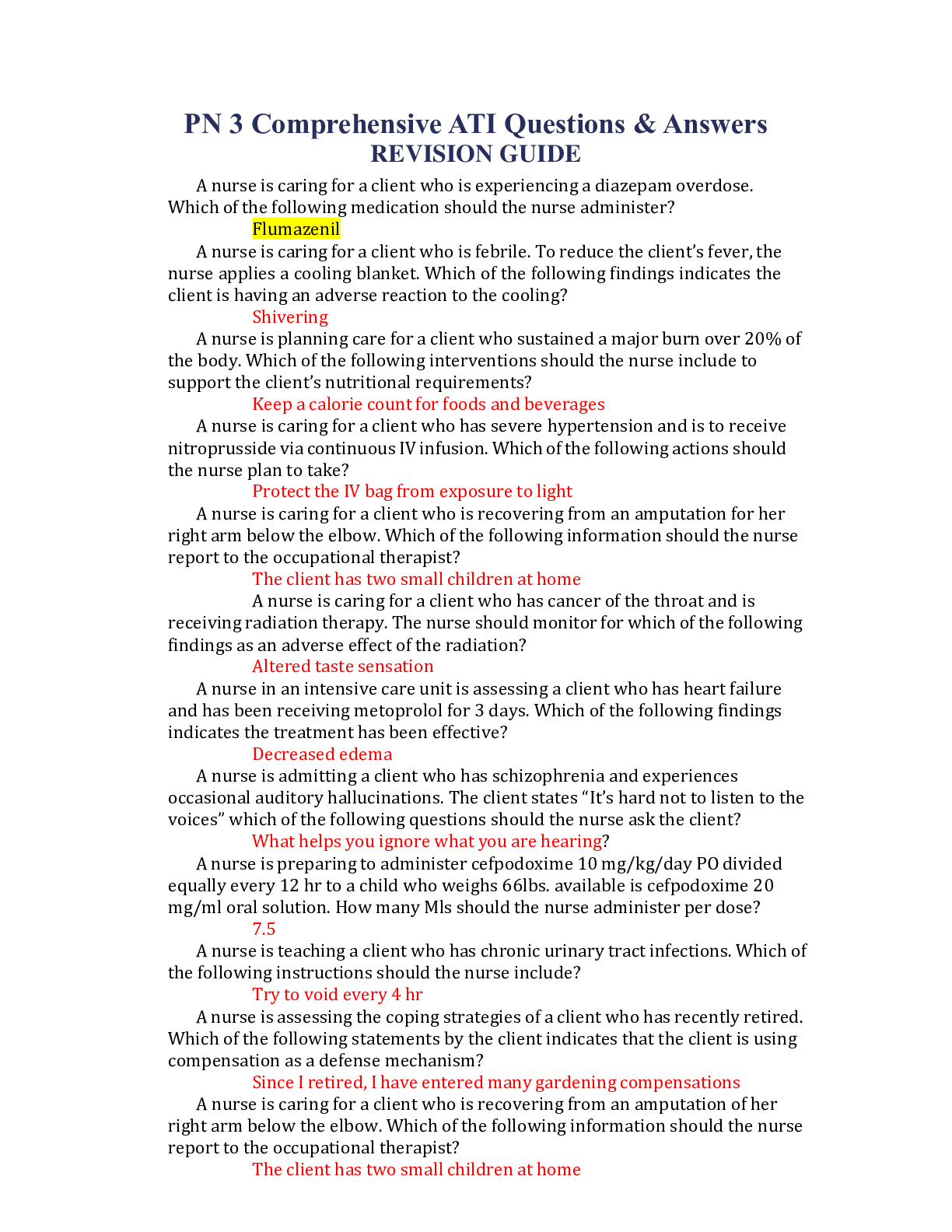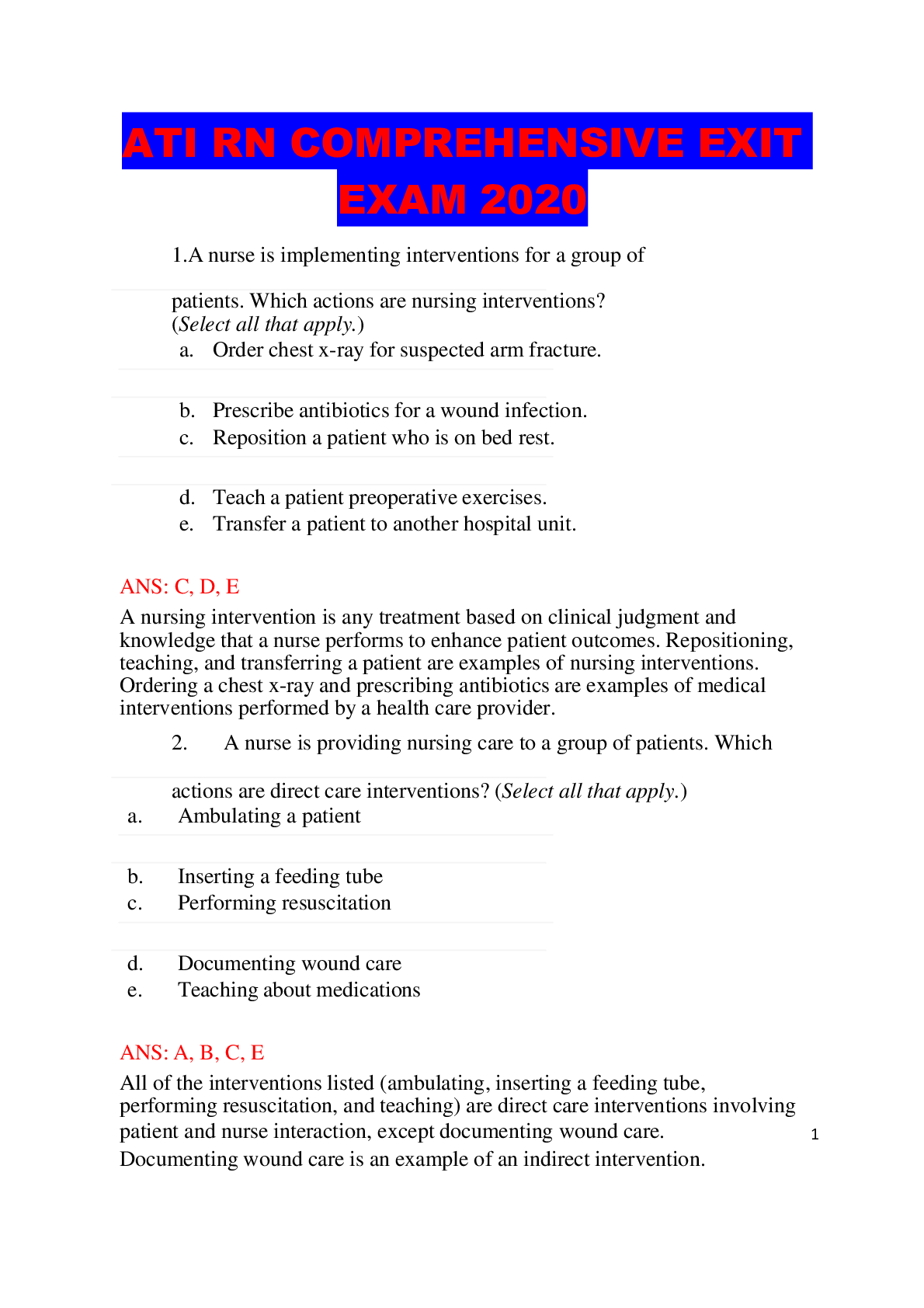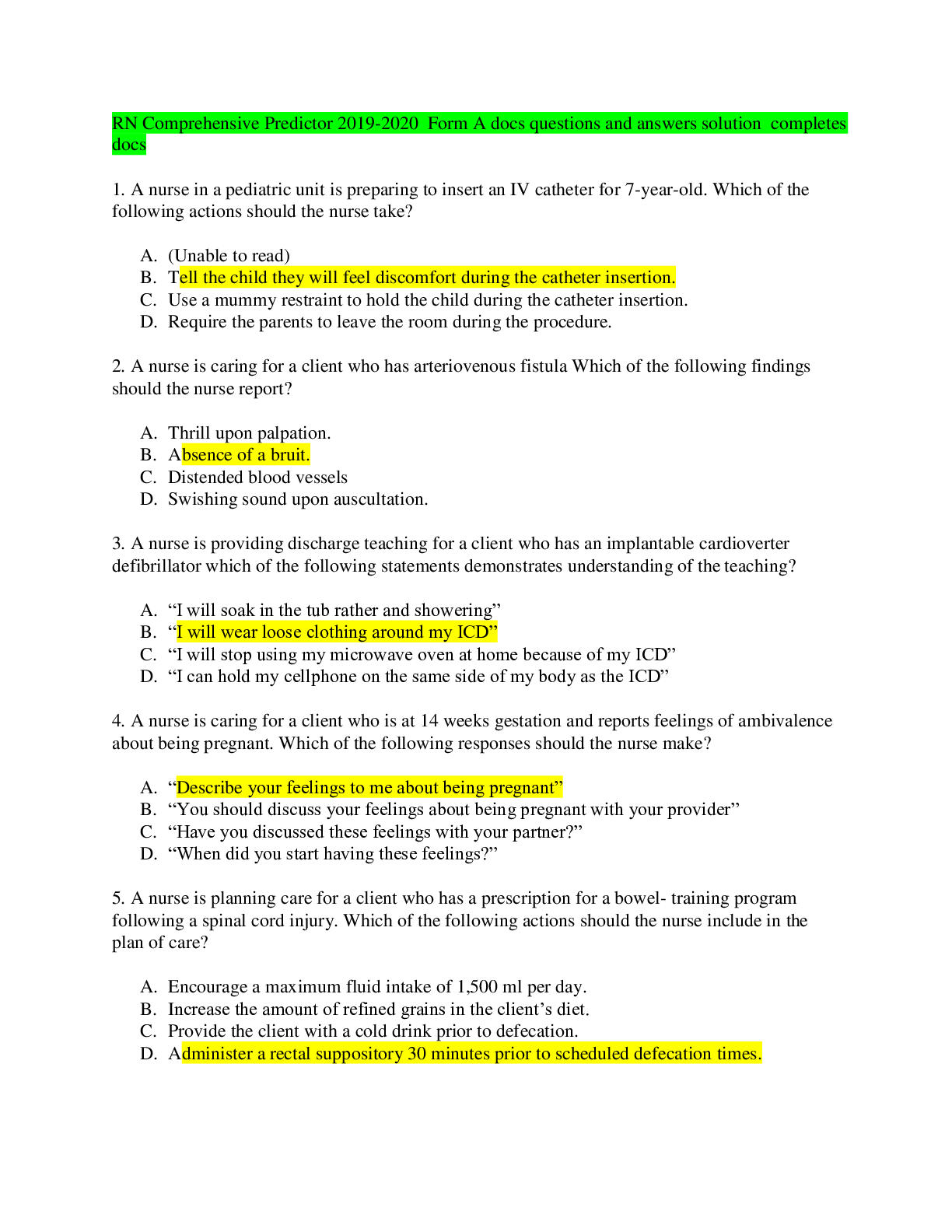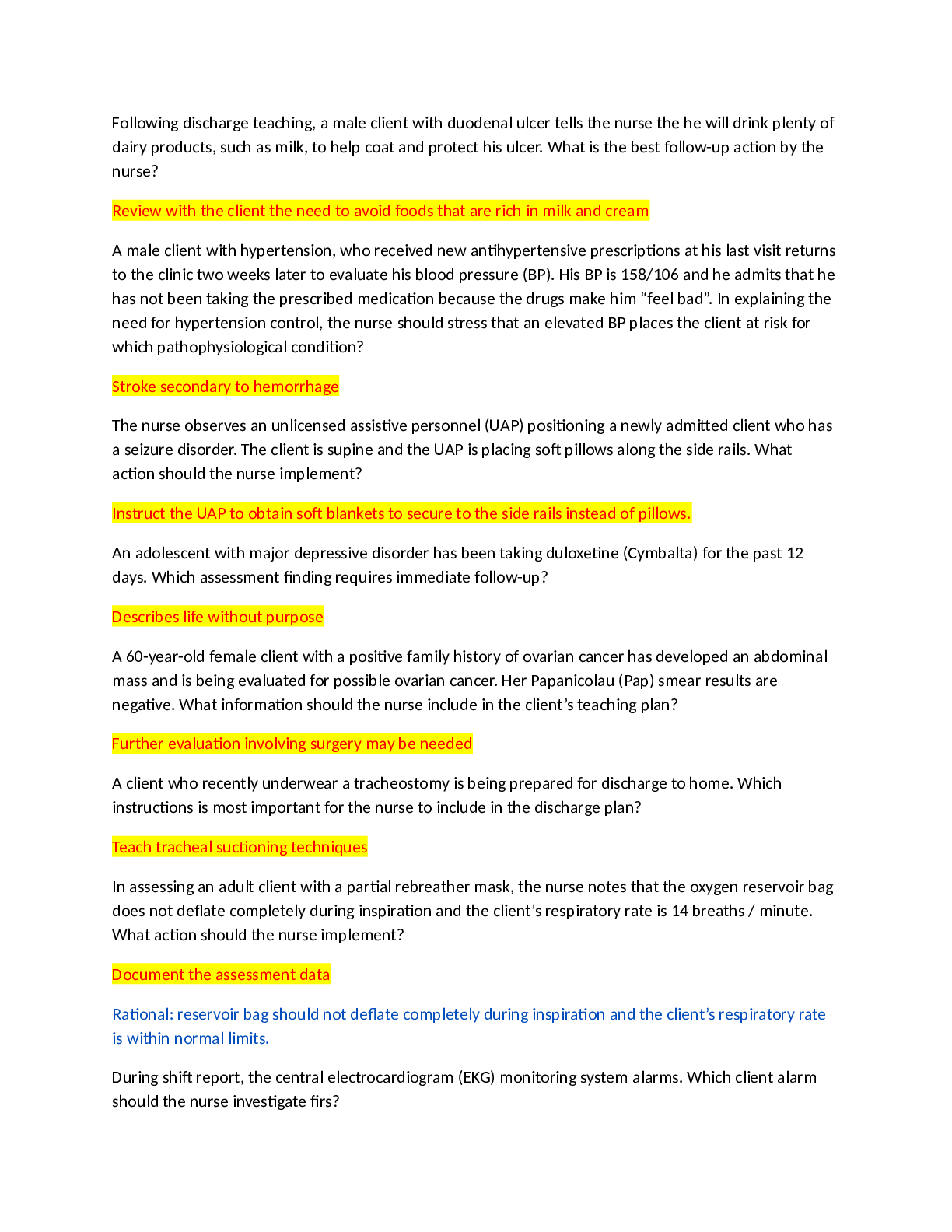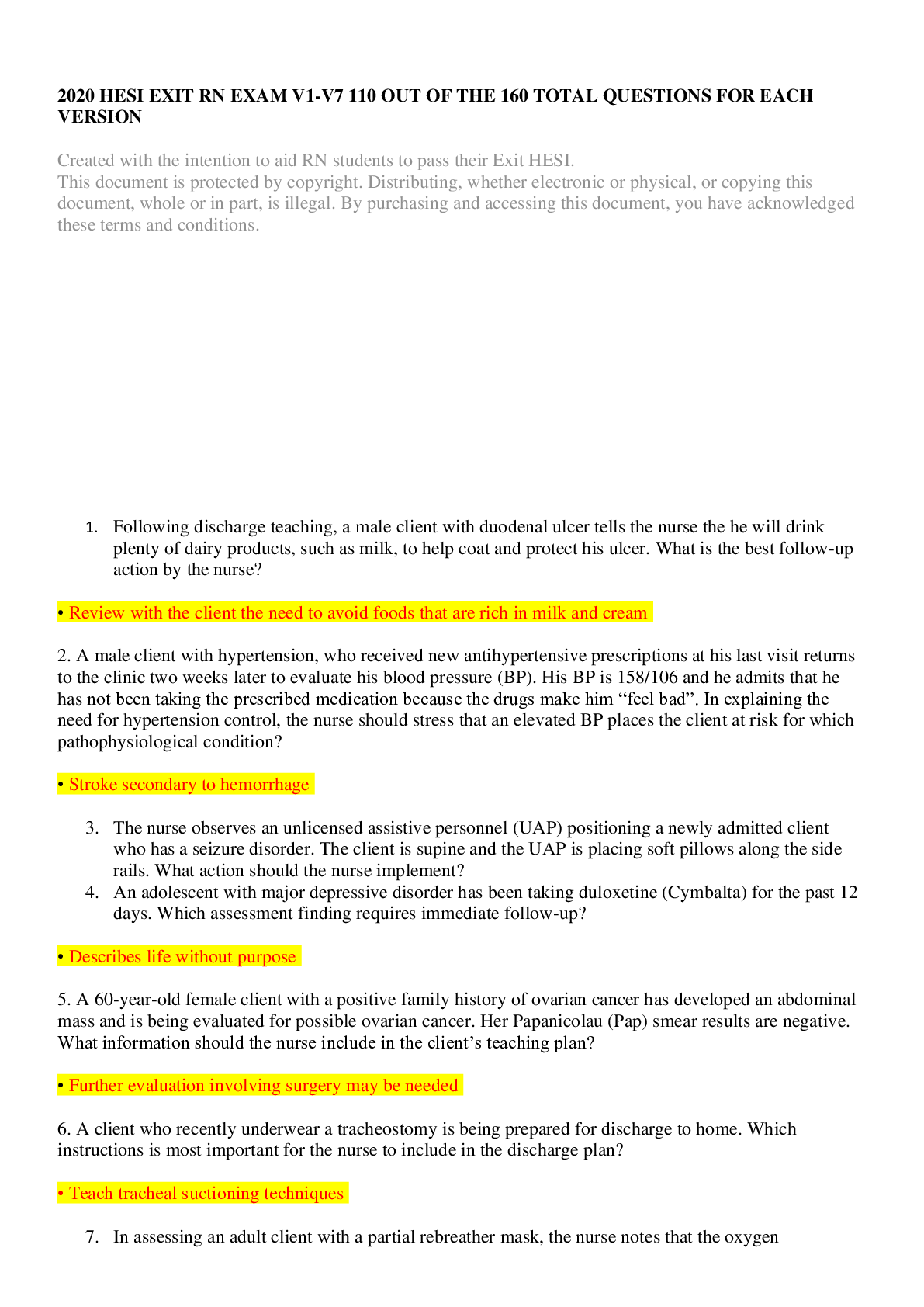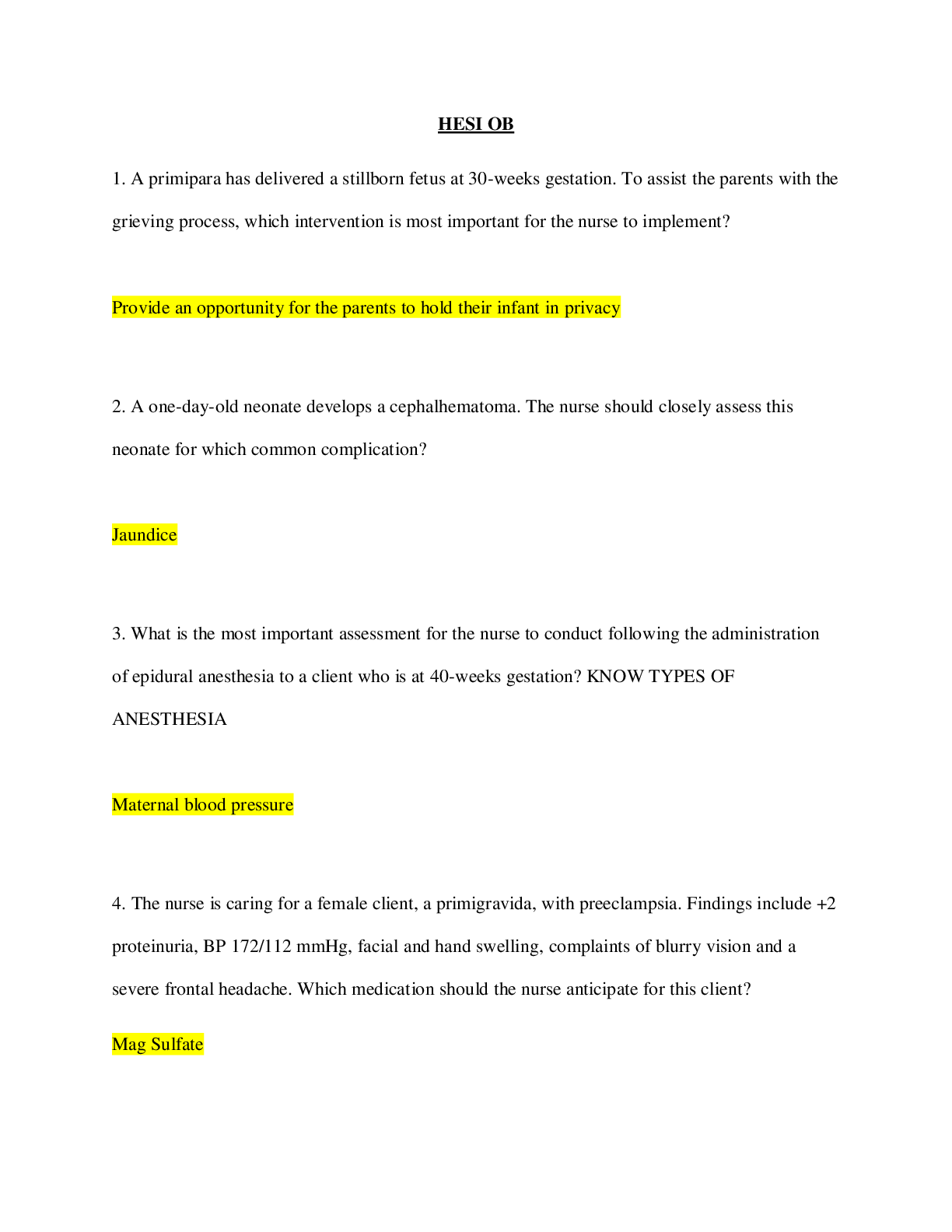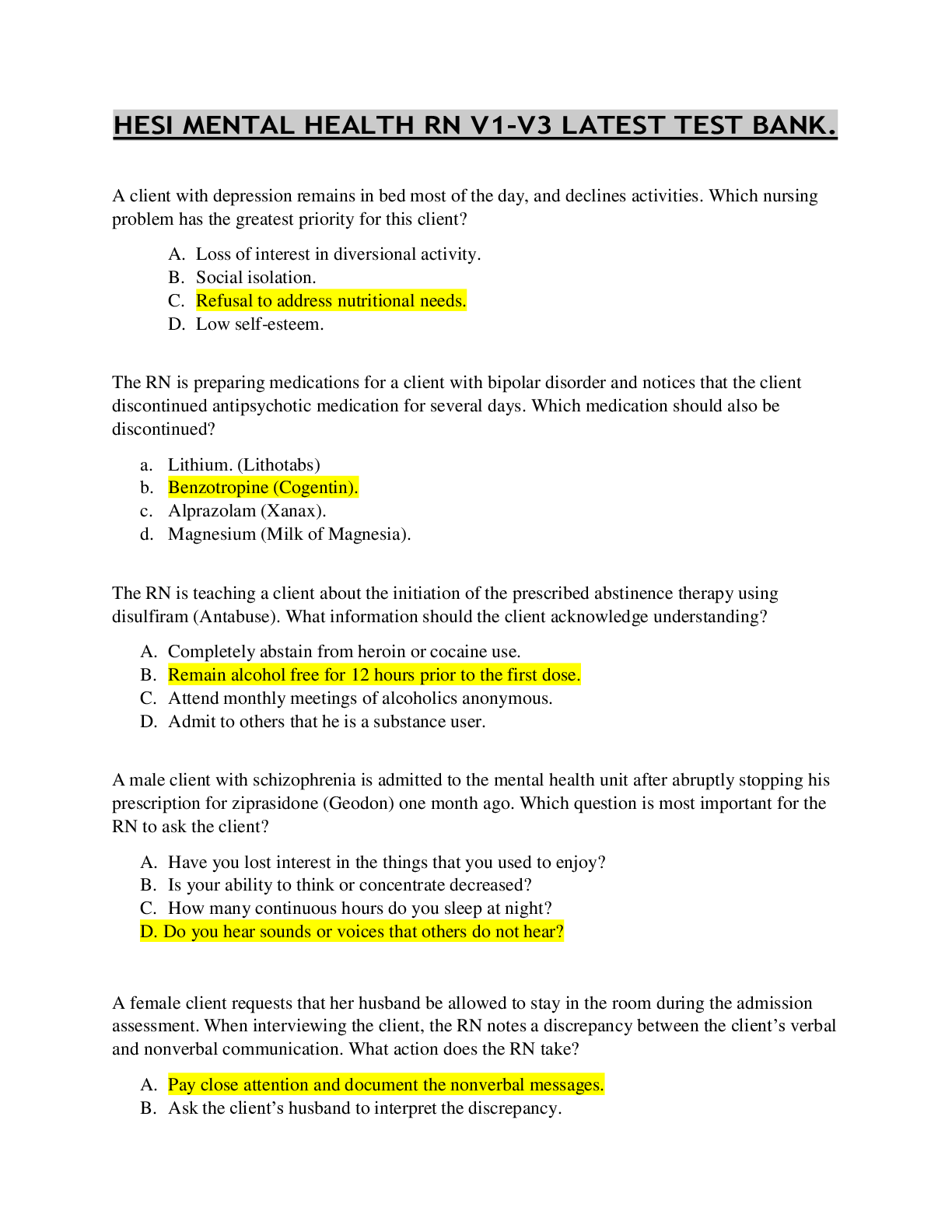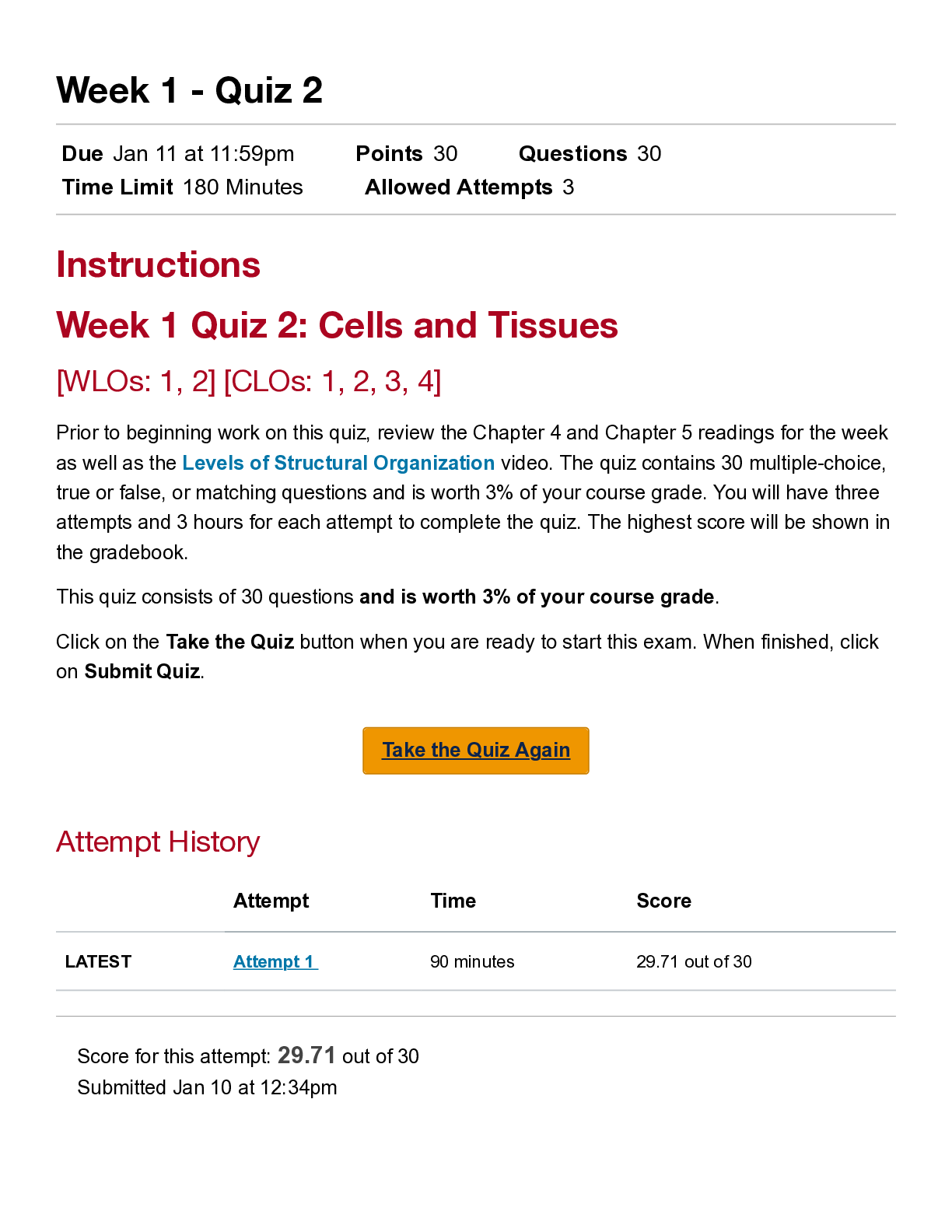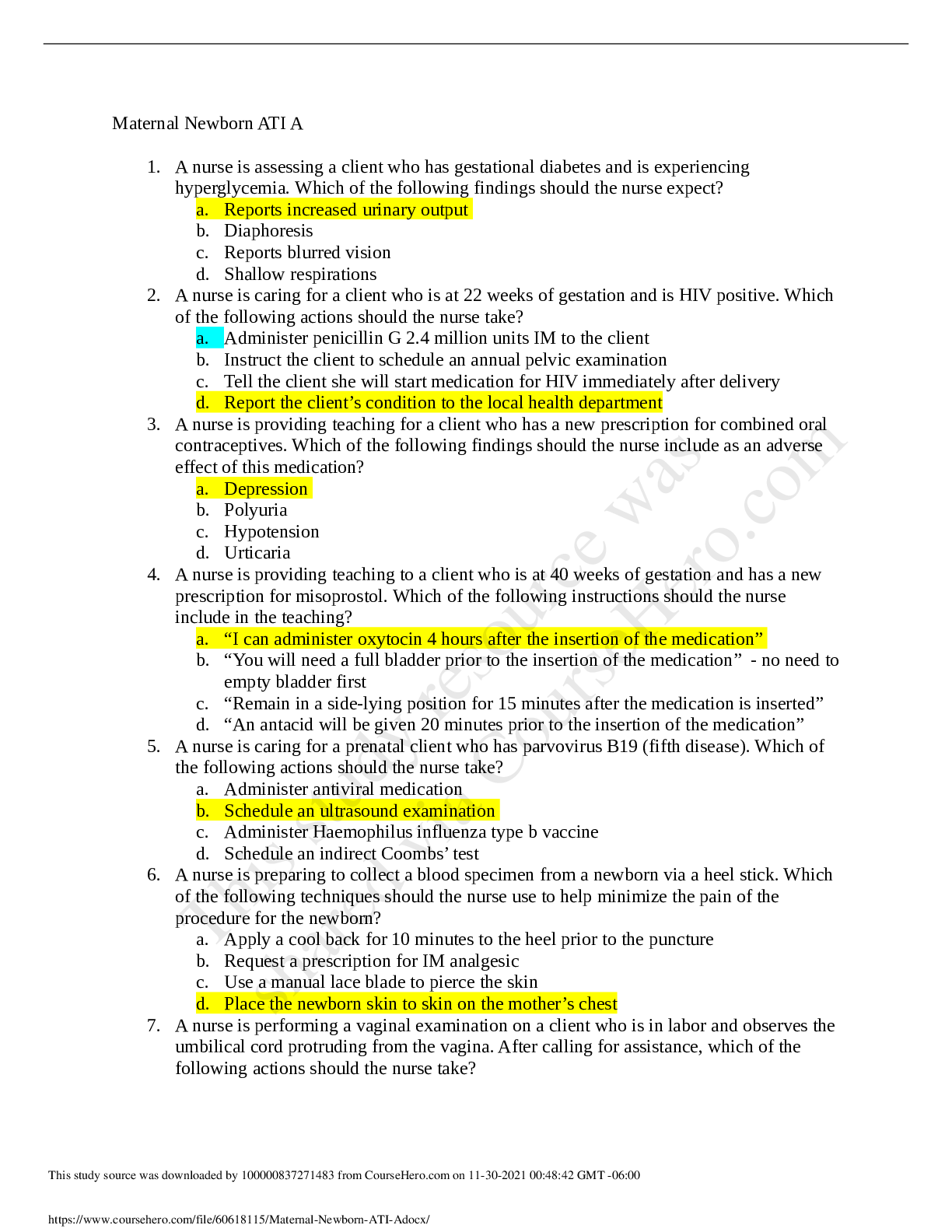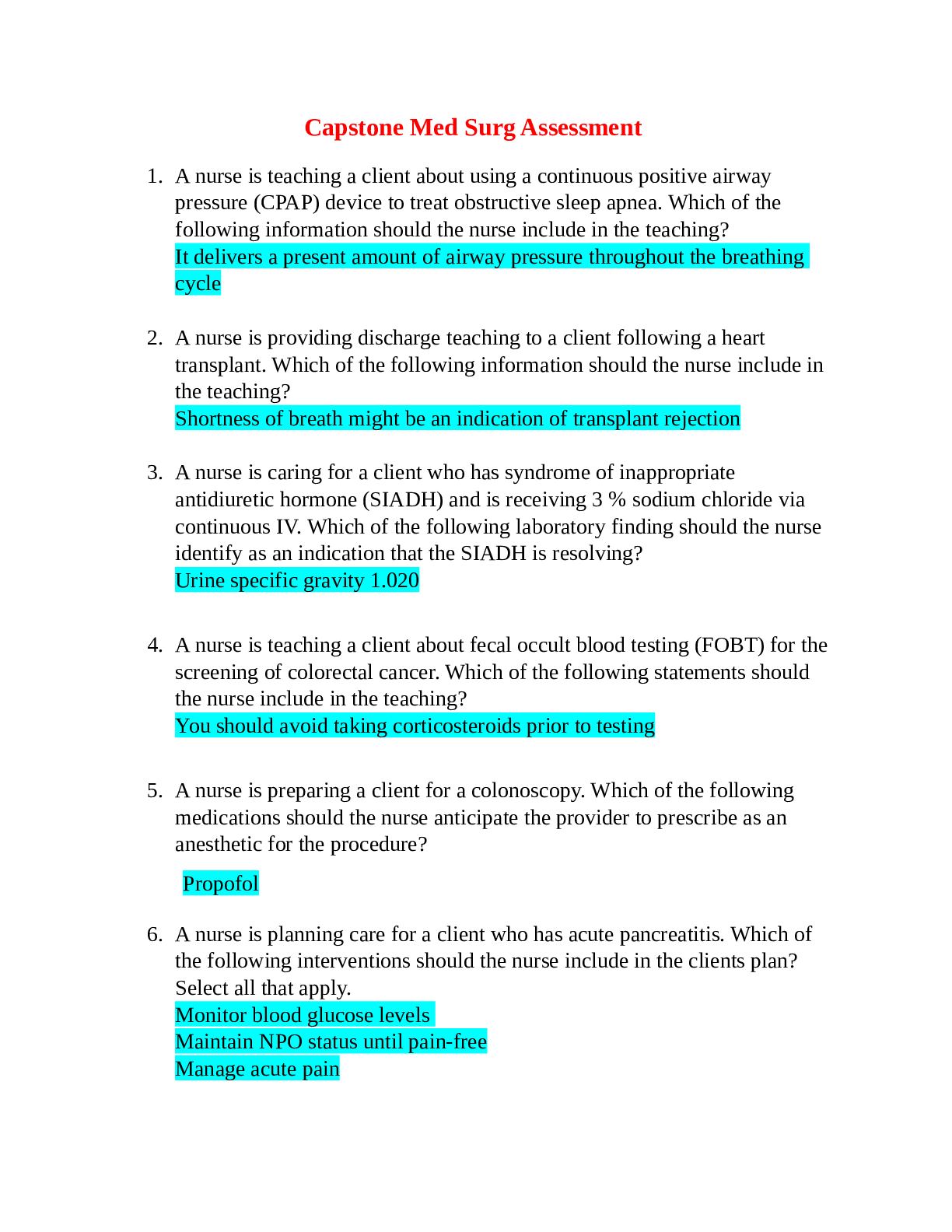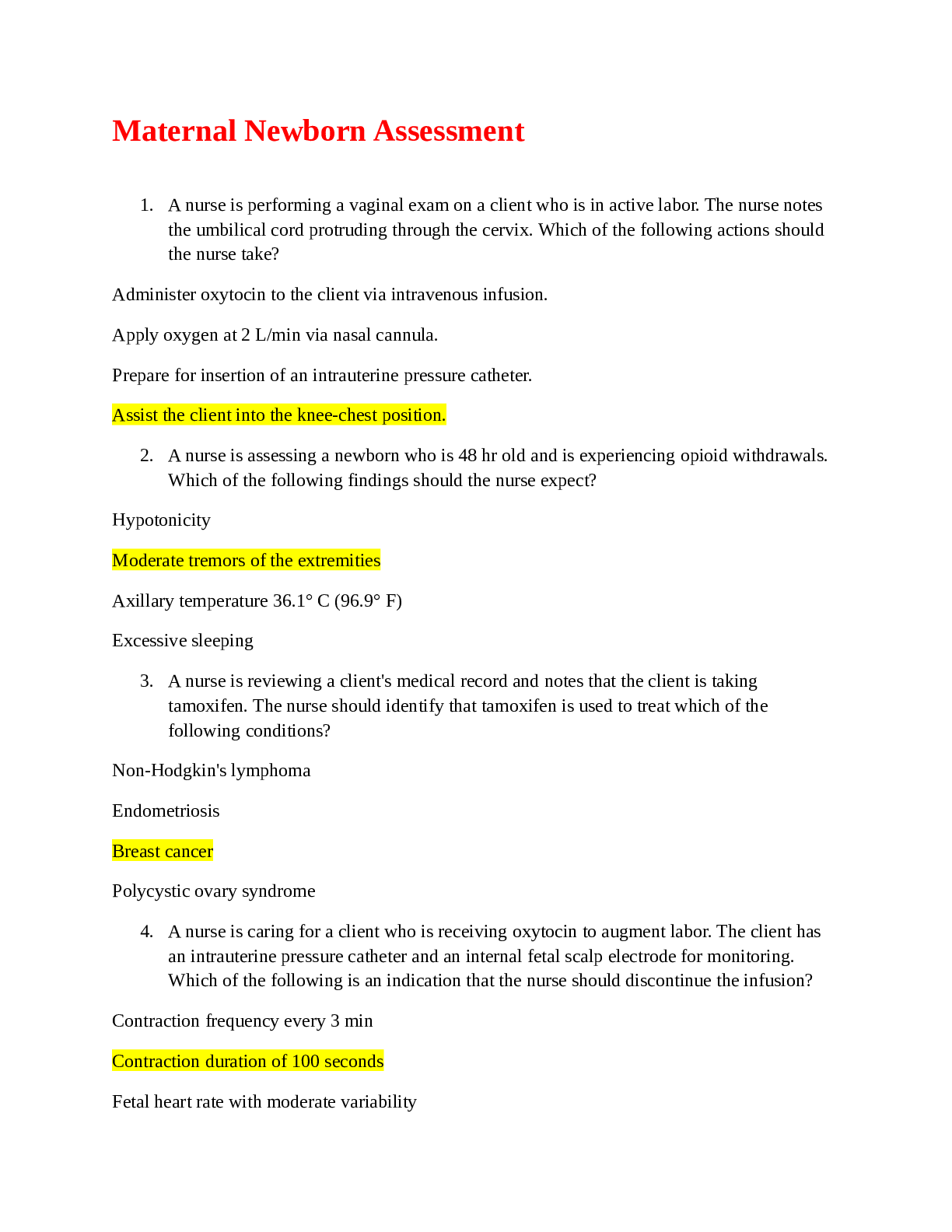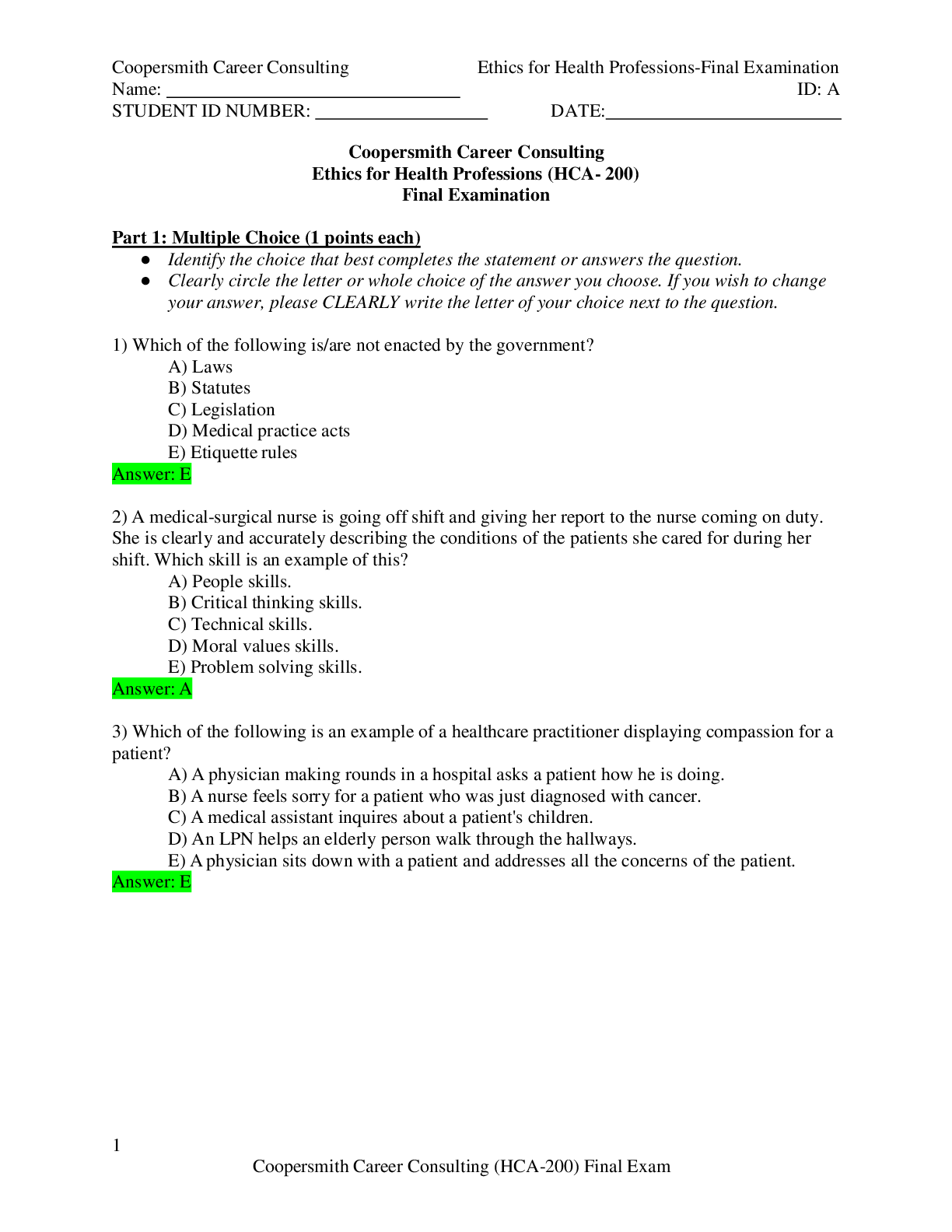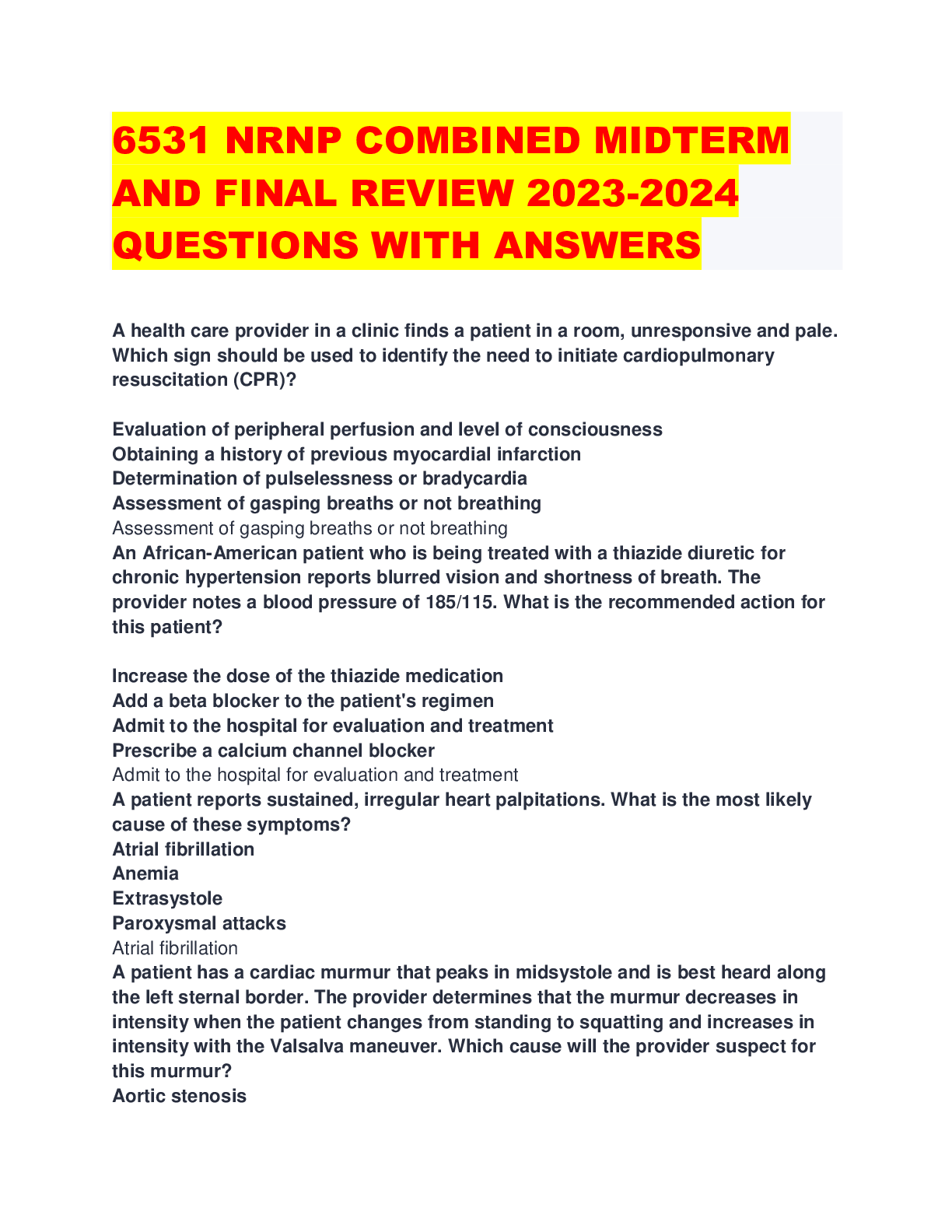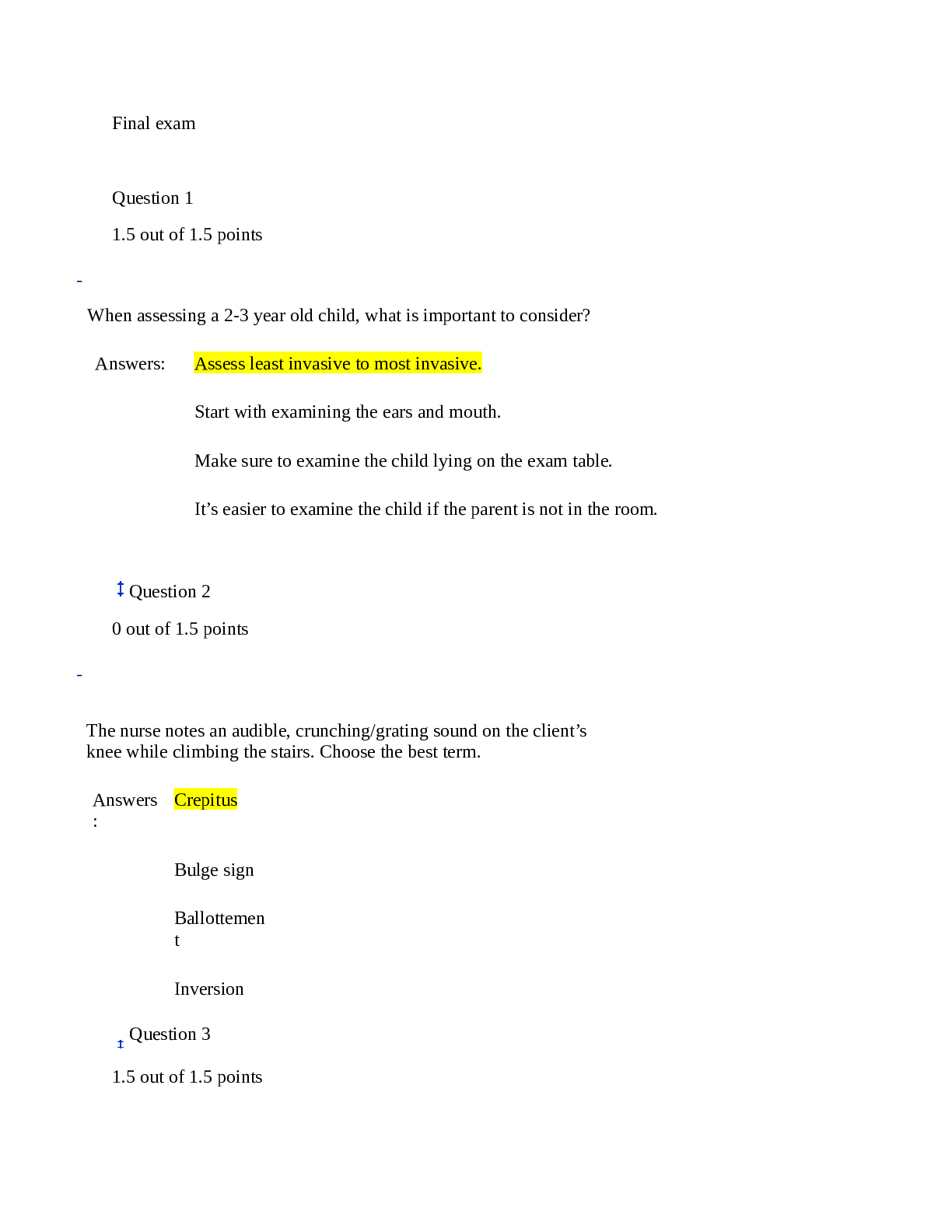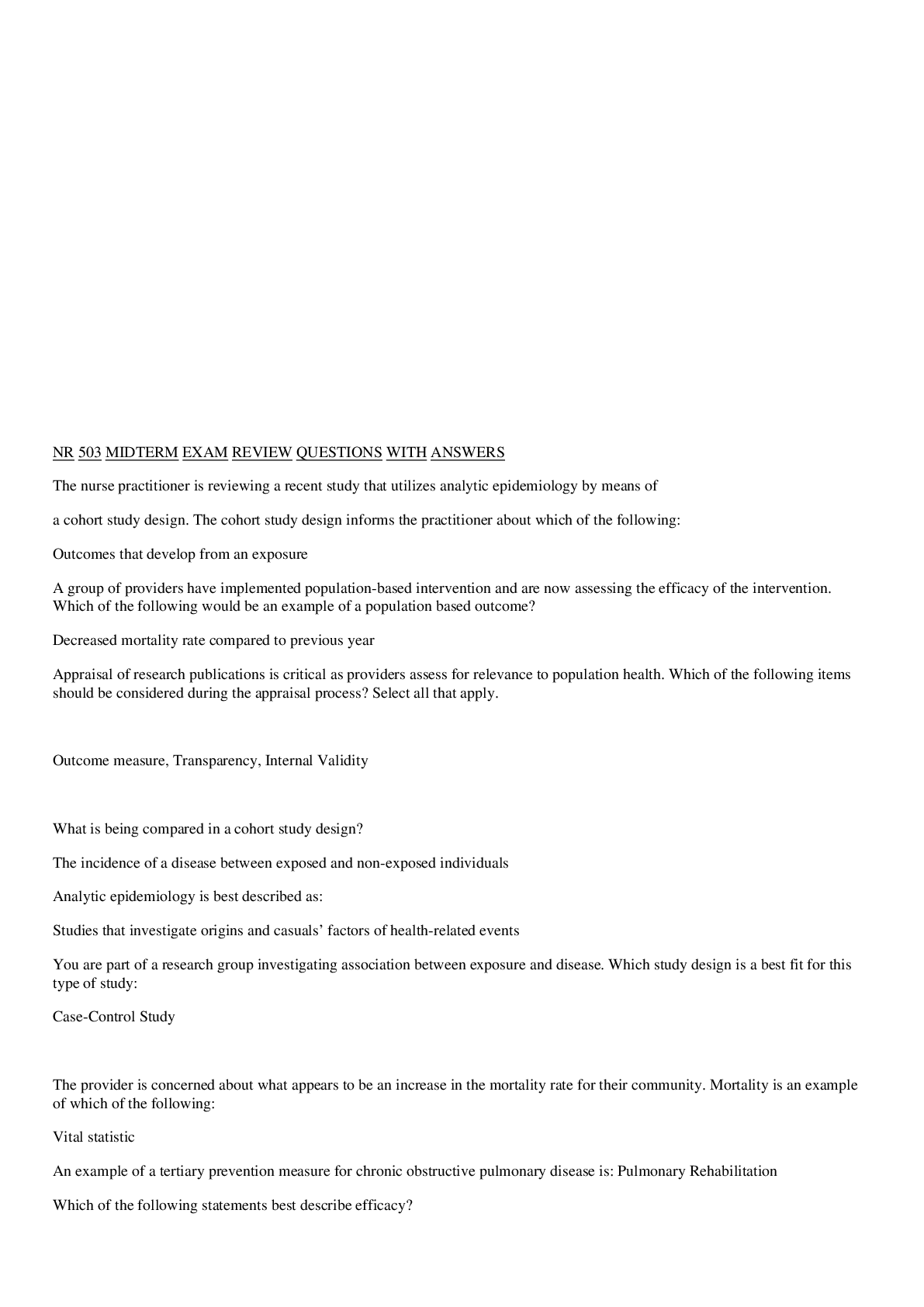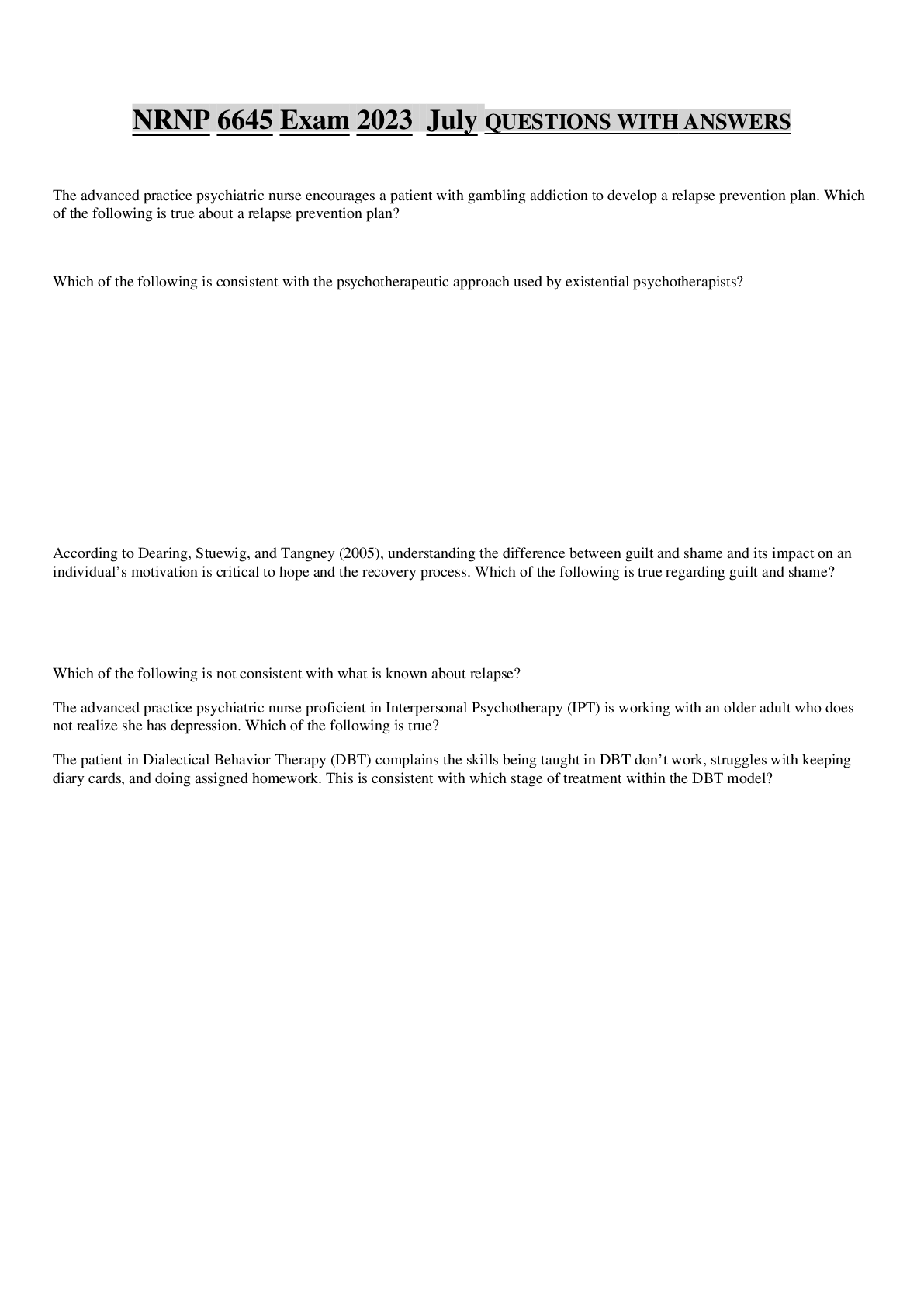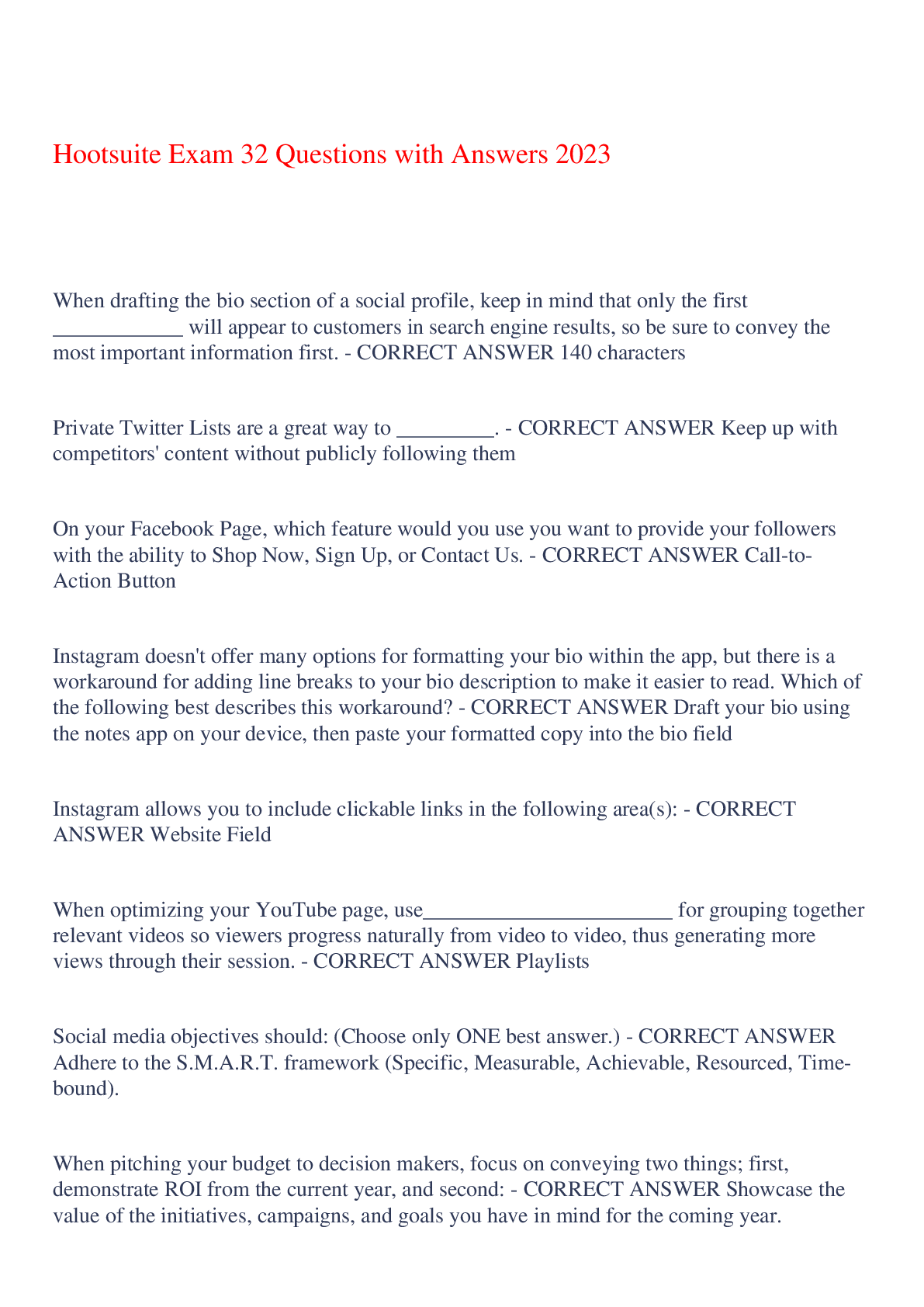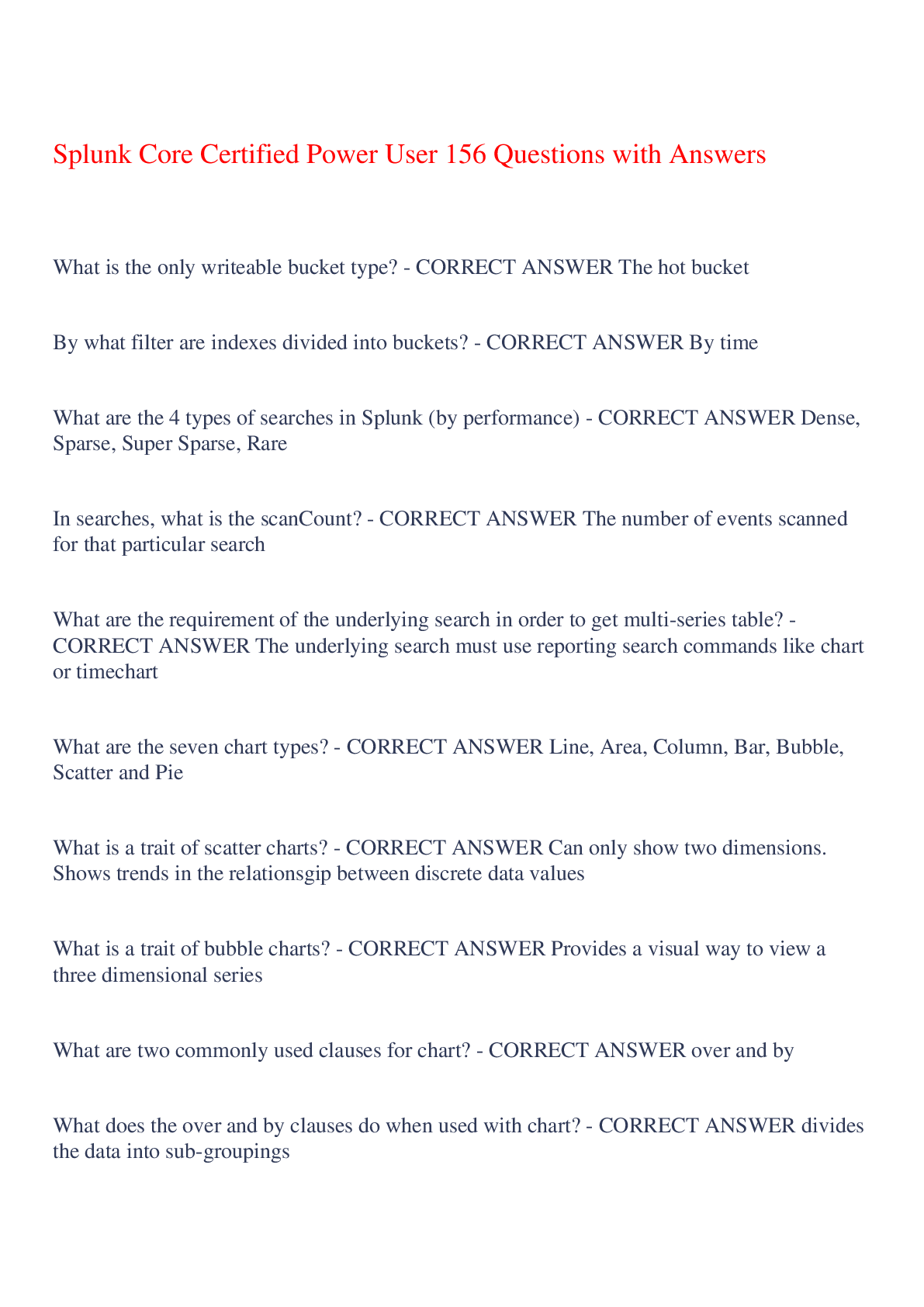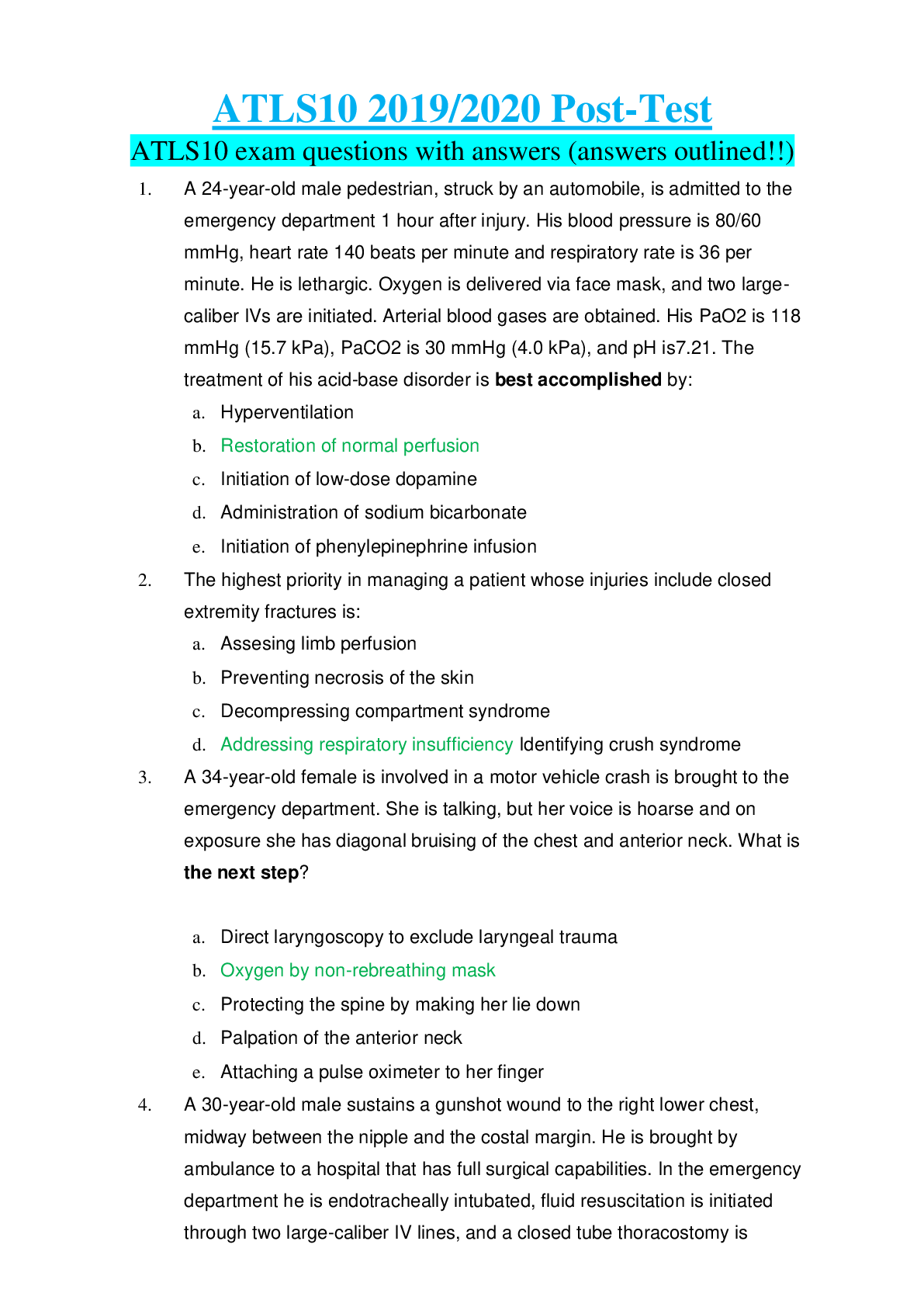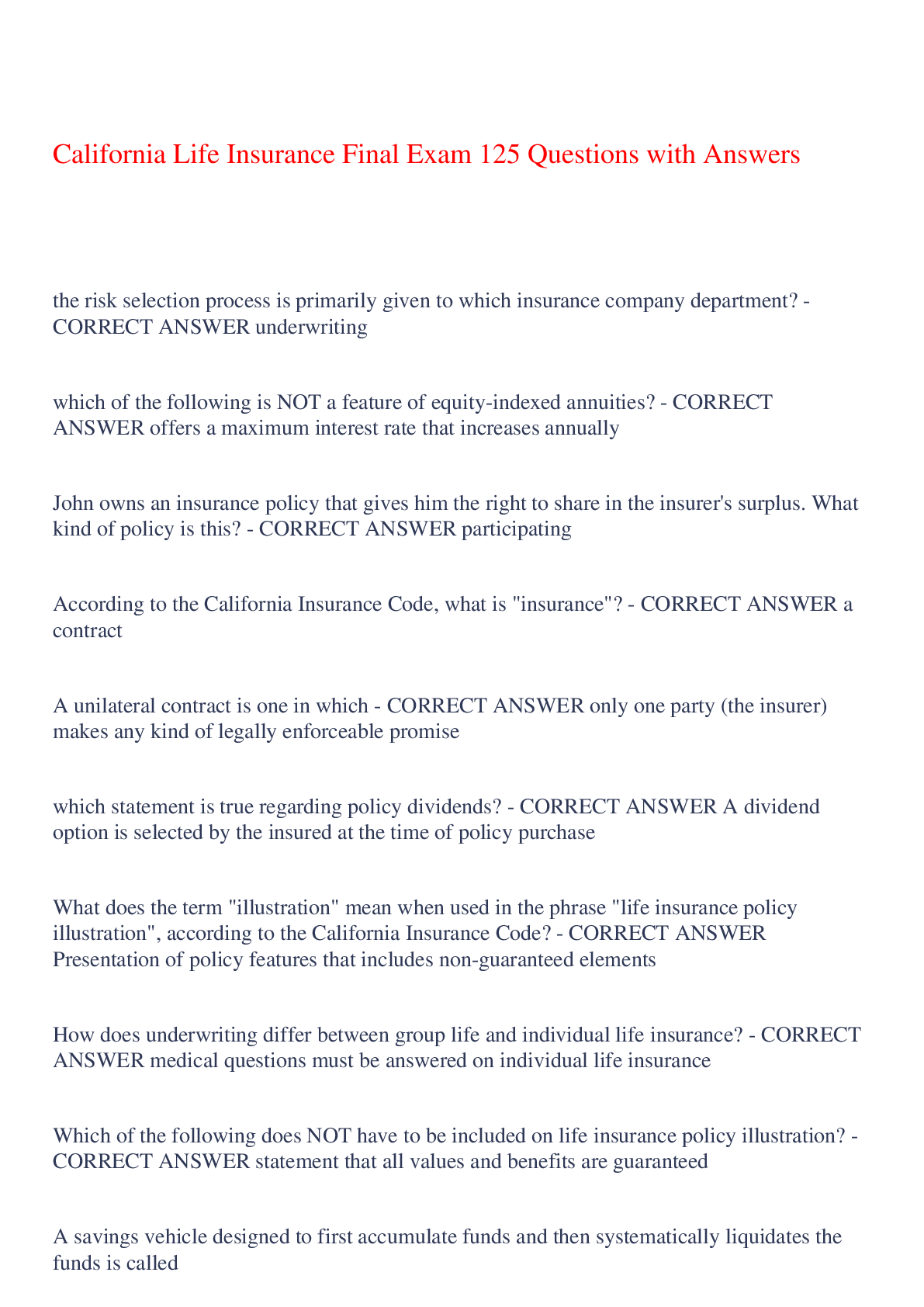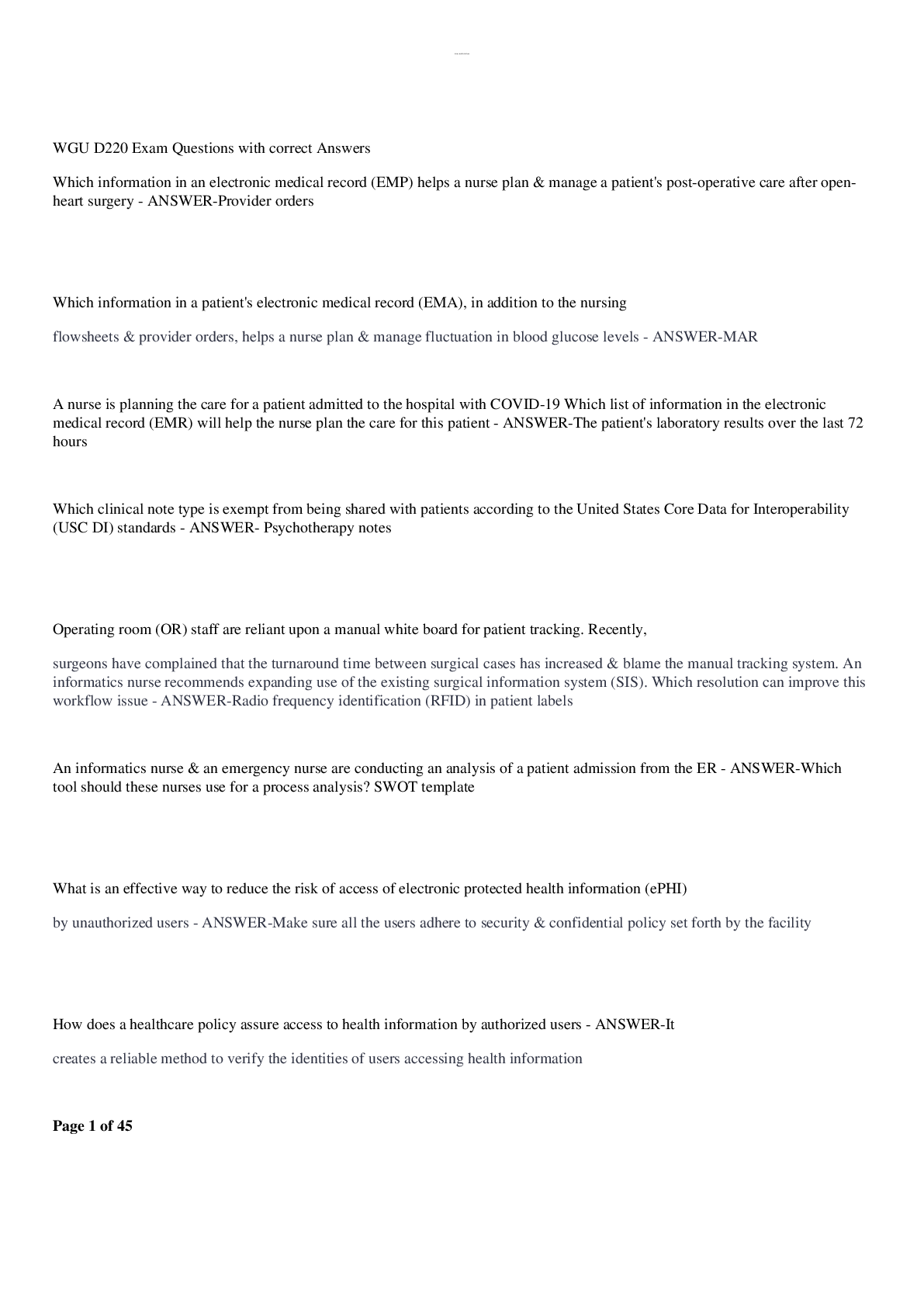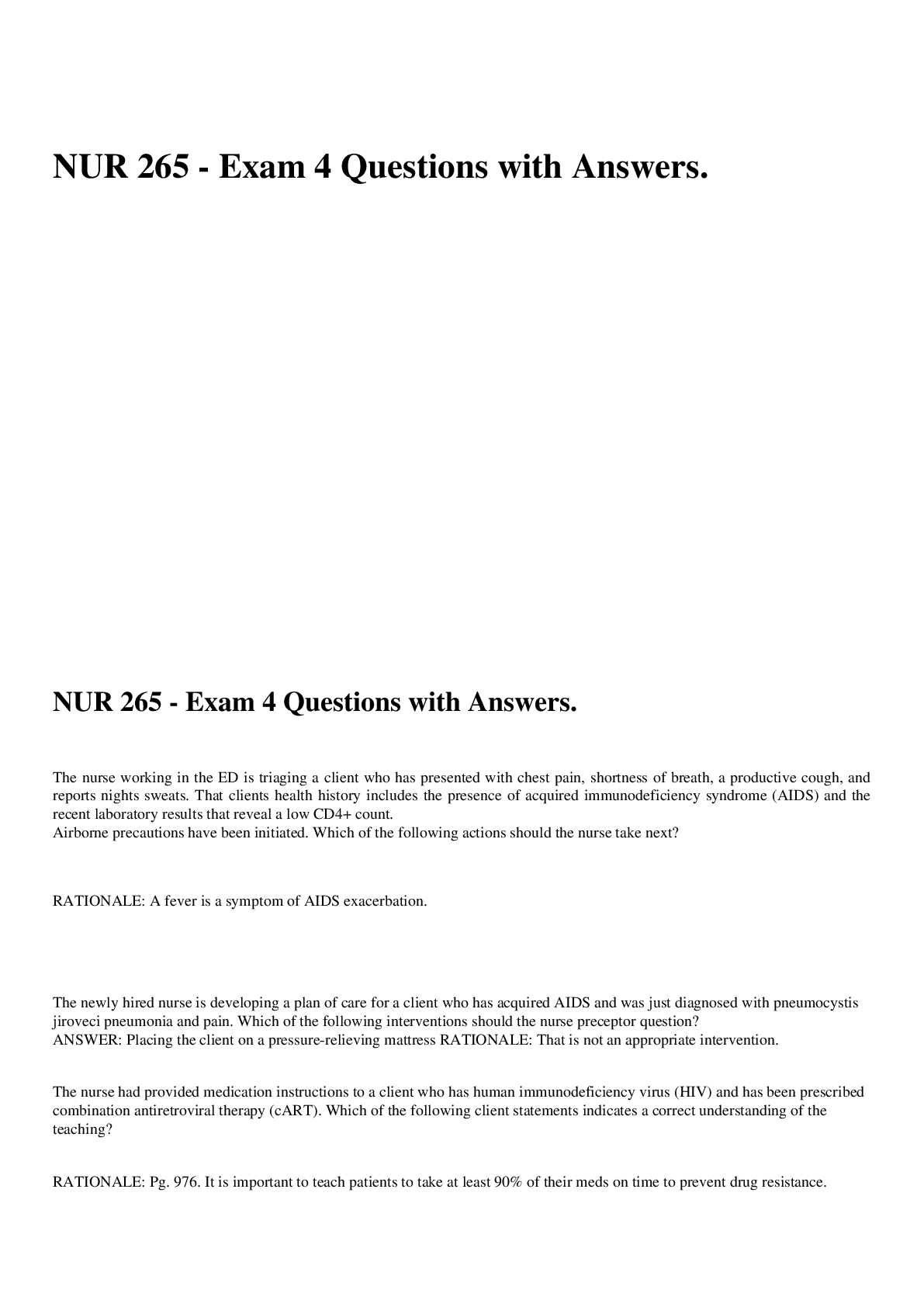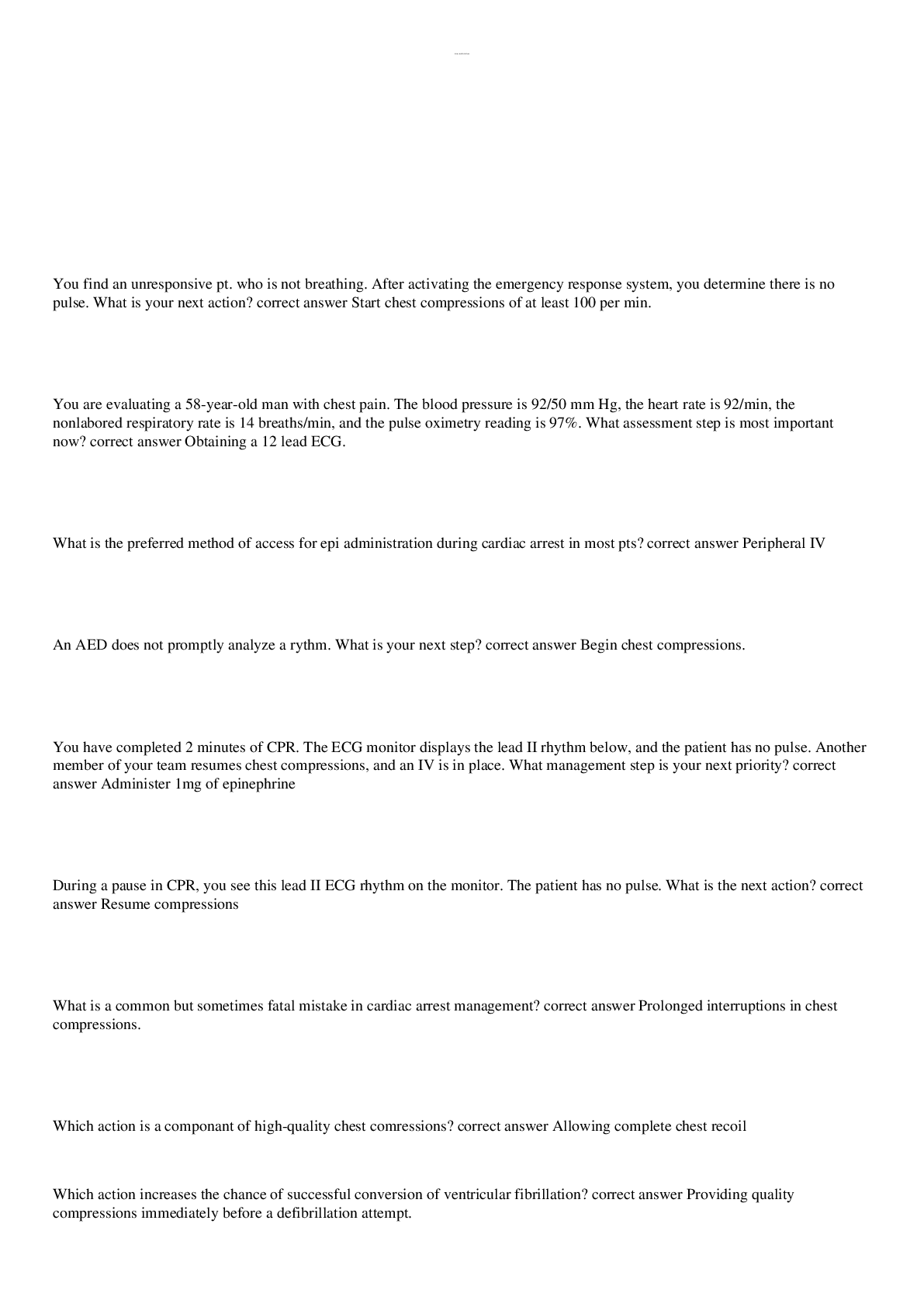PHY 102 Motion Exercises Complete Questions with Answers
Document Content and Description Below
PHY-102:Motion Exercises Complete Questions with Answers Complete the following exercises. 1. Jane is collecting data for a ball rolling down a hill. She measures out a set of different distanc... es and then proceeds to use a stopwatch to find the time it takes the ball to roll each distance. a. What is the independent variable in her experiment? The independent variable is the ball. b. What is the dependent variable in her experiment? The stopwatch is the dependent variable. c. Give one control variable for her experiment. The distance is the control variable. 2. Consider an experiment where you drop an object. a. Briefly describe your proposed experiment. (Make sure it is controlled). For my experiment, I will drop my phone off a 10ft ledge at different heights. b. What would be the independent variable for your experiment? The independent variable is my phone. c. What would be the dependent variable for your experiment? The distance of the 10ft ledge is dependent for this experiment. d. Give one control variable for your experiment. The overall heights in which I chose in conducting my experiment. Consider a freely falling object. V = a * t e. What is the acceleration (in m/s2) after 5 seconds of fall? 5 seconds = 9.8 m/s2 f. What is the acceleration (in m/s2) after 10 seconds of fall? 10 seconds = 9.8 m/s2 g. What is the velocity (in m/s) after 5 seconds of fall? 49 m/s h. What is the velocity (in m/s) of 10 seconds of fall? 98 m/s 3. A sign is hung between two cables as illustrated below. If the sign weighs 350 N, what is the te nsion (in N) in each cable? 4. A construction worker on a high-rise building is on a platform suspended between two cables as illustrated below. The construction worker weighs 850 N, the plank weighs 450 N, and the tension in the left cable is 550 N. a. What is the tension (in N) in the right cable? T = 750 N b. Explain your answer. -FNet = Ma = 0 -550 – 450 – 850 + T = 0 T = 750 N 5. Two forces of 50 N and 30 N, respectively, are acting on an object. Find the net force (in N) on the object if … a. the forces are acting in the same direction 30 + 50 = 80N b. the forces are acting in opposite directions. 50 - 30= 20N 6. A box is pulled straight across the floor at a constant speed. It is pulled with a horizontal force of 48 N. a. Find the net force (in N) on the box. 7. Describe the speed and acceleration of the ball released from the top of the track shown in the figure below. This is a circular motion and also the ball is rolling down. As the ball rolls down its speed increases! Acceleration does also pointing towards the center of the curve. 8. Describe the speed and acceleration of the ball released from the top of the track shown in the figure below. The acceleration/speed of the ball will increase as it moves down the slope. 9. You throw a ball upward with a speed of 14 m/s. What is the acceleration of the ball after it leaves your hand? Ignore air resistance and provide an explanation for your answer. The answer is 9.8 m/s^2 downwards. Since there is no other forces other than gravity 9.8 m/s^2 is the only thing I can account for. 10. How would your answer to the previous question change if you take into account the effects of air resistance? If you take into account the effects of air resistance the acceleration would change as the object's speed changes it would be higher than 9.8 initially but would be lower than 9.8 as it started falling back to the ground. 11. Describe the speed and acceleration of a person sky diving. Include in your explanation a description of the motion before the parachute is opened as well as a description of the motion after the parachute is opened. Before the parachute is open there is a downward force as gravity is pushing that person towards the earth. Upon the parachute opening up, the air is pocketed in the parachute which pushed the parachute upwards creating an upward draft so that the person can control the parachute. The parachute is open and therefore the AIR RESISTANCE goes up making the person slow down as a result. 12. A net force of 24 N is acting on a 4.0-kg object. Find the acceleration in m/s2. 24 = 4(a) 24/4 = 6 = a Answer: 6 m/s2 13. A person pulls horizontally with a force of 64 N on a 14-kg box. There is a force of friction between the box and the floor of 36 N. Find the acceleration of the box in m/s2. Show your work. The remaining questions are multiple-choice questions: 14. One difference between a hypothesis and a theory is that a hypothesis A. is a guess that has not been well tested, whereas a theory is a synthesis of well-tested guesses. B. is testable, whereas a theory is not testable. C. can be revised, whereas a theory cannot be revised. D. is not testable, whereas a theory is testable. 15. A car starts from rest and reached a speed of 24 m/s in 6 seconds. What is the acceleration of the car? A. 144 m B. 6 m/s2 C. 4 m/s2 D. 10 m/s2 E. 0 m/s2 16. Which of the following forces is NOT a contact force? A. Friction force B. Support force C. Force of gravity D. Tension force 17. If you pull horizontally on a desk with a force of 150 N and the desk doesn't move, the friction force must be 150 N. Now if you pull with 250 N so the desk slides at constant velocity, the friction force is A. more than 150 N, but less than 250 N. B. 250 N. C. more than 250. 18. Suppose a particle is accelerated through space by a constant 10 N force. Suddenly the particles encounters a second force of 10 N in a direction opposite to that of the first force. The particle A. is brought to a rapid halt. B. theoretically accelerates to speeds approaching the speed of light. C. continues at the speed it had when it encountered the second force. D. gradually slows down to a halt. 19. Newton's First Law of Motion applies to A. objects at rest only. B. moving objects only. C. both moving and nonmoving objects. 20. A freely falling object starts from rest. After falling for 2 seconds, it will have a speed of about A. 5 m/s B. 10 m/s C. 20 m/s D. 40 m/s 21. Suppose an object is in free fall. Each second the object falls A. the same distance as in the second before. B. a larger distance than in the second before. C. with the same instantaneous speed. D. with the same average speed. [Show More]
Last updated: 1 month ago
Preview 1 out of 6 pages

Reviews( 1 )

by jpou · 3 years ago
Document information
Connected school, study & course
About the document
Uploaded On
Dec 18, 2020
Number of pages
6
Written in
Additional information
This document has been written for:
Uploaded
Dec 18, 2020
Downloads
1
Views
72

